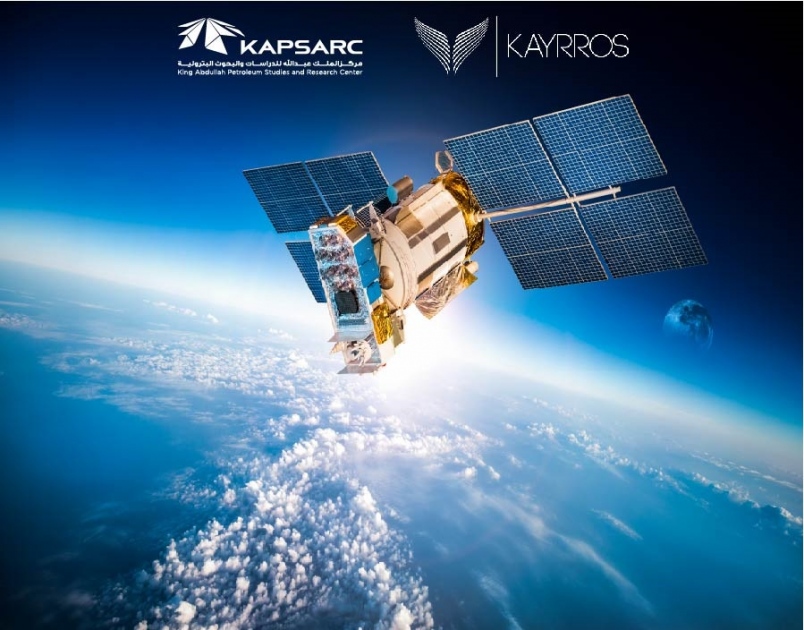
KAPSARC and Kayrros Unveil Saudi Arabia's Methane Emission Landscape Using Satellite Technology
In an innovative collaboration, the King Abdullah Petroleum Studies & Research Center (KAPSARC) and Kayrros have published the first-ever measurements of elusive methane emissions in Saudi Arabia using novel satellite technology, covering the years 2016-2022. The study also covered carbon dioxide (CO2) and nitrous oxide (N2O) emissions for the same period.
KAPSARC’s recently launched discussion paper titled ‘Using Satellite Technology to Measure Greenhouse Gas Emissions in Saudi Arabia’ by Anwar Gasim, Walid Matar and Abdelrahman Muhsen highlights how the two organizations leveraged NASA’s and the European Space Agency’s state-of-the-art satellites* to estimate methane emissions from Saudi Arabia's oil and gas sector at approximately 780 kilotons in 2022. This new data positions Saudi Arabia as having the second-lowest methane intensity in oil and gas production when compared to other oil-producing countries, second only to Norway.
The project takes on an added significance given the limited global sources providing methane inventories for Saudi Arabia and their diverging estimates. Notably, the emission estimates developed by KAPSARC and Kayrros are approximately 73% lower than those reported by the International Energy Agency (IEA) and the Emissions Database for Global Atmospheric Research (EDGAR) for the same year.
Fahad Alajlan, President of KAPSARC, emphasized that ‘this stark difference underscores the groundbreaking nature of our findings, challenging existing norms and emphasizing the importance of our innovative approach in redefining our understanding of emissions in Saudi Arabia.’
Furthermore, the project estimates reveal that methane emissions from Saudi Arabia’s oil and gas industry constitute only one-third of total methane emissions, aligning with the most recent national greenhouse gas inventory submitted by the Saudi Clean Development Mechanism Designated National Authority in 2022.
Antoine Rostand, Co-founder and President at Kayrros, said: ‘It is within our power as a global community to reduce methane emissions dramatically. Our data shows this conclusively.
‘Producers should strive to emulate the Saudi model, introducing strong methane regulations to limit emissions of this potent greenhouse gas and using independent, verifiable and reliable data to guide action.
‘We’re pleased to be working with KAPSARC to advance the collective understanding of methane emissions and to be involved in this first-of-its kind practice.’
The satellite estimates for the Saudi oil and gas sector only pertain to oil and gas fields, including emissions from production and partially accounting for the transportation of hydrocarbons and processing of gas occurring within the vicinity of the fields. Operations situated further downstream were excluded from the analysis.
The results carry important policy implications for Saudi decision-makers, given that Saudi Arabia is a signatory to the Global Methane Pledge which aims to reduce methane emissions by 30% globally by 2030. Better information on Saudi emissions can guide more effective climate actions. For example, in Saudi Arabia, satellite-based estimation results point to the importance of tackling methane emissions from the waste sectors.
KAPSARC and Kayrros will present the project at COP28 in Dubai on Sunday, December 10, 2023, during a side-event session titled 'Satellite Technology for Measuring and Tracking GHG Emissions' from 2:00 PM to 2:45 PM in the blue zone, building 88, second floor, shared presentation stage 3. For those unable to attend in person,
KAPSARC’s discussion paper is available for download here.


























